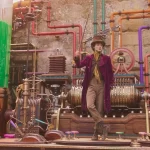Jazz on a Summer’s Day: To Be in That Number, by David Bax

Every year since 1954, jazz lovers have gathered in Newport Rhode Island for the Newport Jazz Festival, with the exception of 2020 and the nine years the event was located in New York. Meanwhile, every America’s Cup yacht race from 1930 through 1983 was also held in Newport. Today, both are venerable institutions but Bert Stern’s Jazz on a Summer’s Day was filmed in 1958, when the newness and early rock ‘n’ roll energy of the festival would have stood in stark contrast to the centenarian sporting contest. Stern introduces us to this strange mixture by opening his film with shimmering images of the yachts and their crews as reflected in the water, accompanied by the playful flute of Jimmy Giuffre. It’s a spot-on visualization of the abstractness of jazz. Plus it’s just a terrifically groovy tune.
Sterns returns to shots of the race repeatedly but Jazz on a Summer’s Day is really about the artists, their fans and the music that binds them together. It’s an unmistakable early example of the concert film, easily divided into numbers.
Starting August 12th, a new restoration of the film will be available in virtual cinemas through Kino Marquee. The clean-up was done by IndieCollect and it’s stunning. The color and quality of light are such that you can nearly feel the sun on your neck and the grass dampening under your feet as day turns to night.
Maybe there’s a little too much sun for the early festival-goers, though. The daylight section of Jazz on a Summer’s Day shows us a hilariously inert audience. Even the grand introduction Thelonious Monk receives doesn’t inspire the crowd to put down their drinks or–in at least one case–their books. You wouldn’t even know these people like jazz if they didn’t applaud at the end of each song. As we soon find out, though, this doesn’t mean people aren’t partying. Eventually we get shots of rowdy bars and raucous house parties where attendees pre-game for the bigger events of the long evening ahead. Still, it’s too bad they missed Anita O’Day. She’s great.
They’re all there, finally, by the time Chuck Berry gets folks spinning and twisting on the grass to “Sweet Little Sixteen” (proving Newport’s jazz contingent was far less opposed to electric guitars than the folk set). After that, everyone sings along with Louis Armstrong before, finally, Mahalia Jackson takes us home and then takes us higher, singing “The Lord’s Prayer” at the stroke of midnight.
Stern’s most bold and artful decision is to almost completely remove any sound from the film other than that coming from the stage. It’s as if he shot everything MOS and then borrowed the board recording. The result is that Jazz on a Summer’s Day is more montage than documentary, giving us plenty to look at while directing us to listen to what’s really important.




























